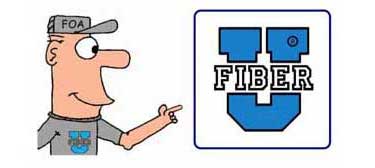Lesson:
Terminating UTP Cable With Plugs
Objectives:
From this lesson you should learn:
How to use these tools to strip cable to the bare fiber
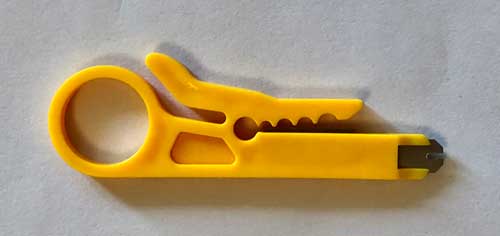
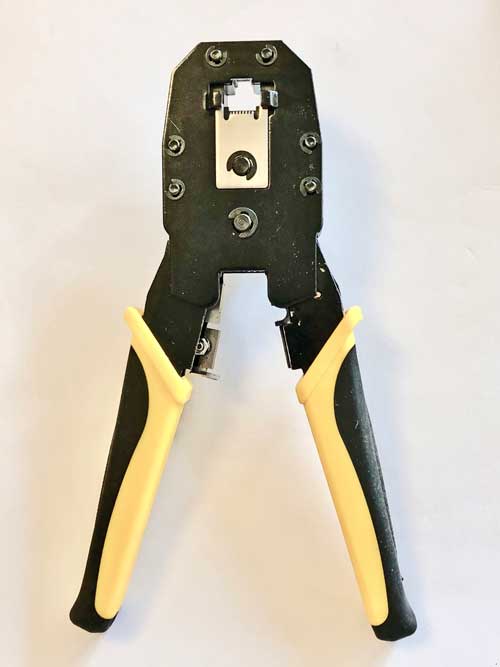
Tools:
Cable Stripper
Crimper
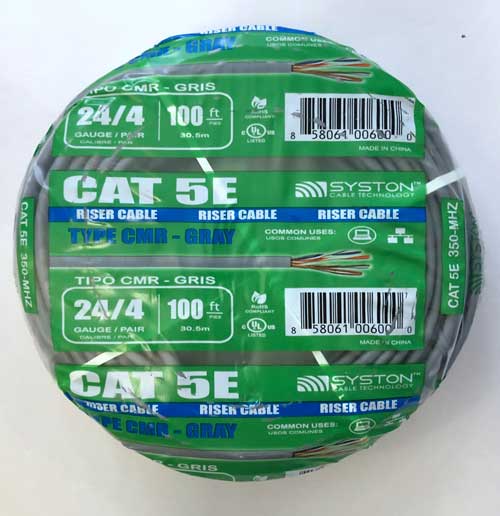
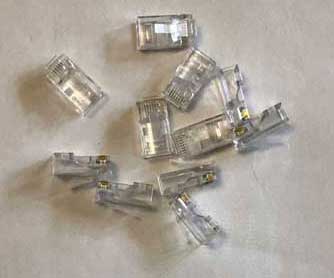
Components:
UTP cable
Cat 5e modular 8-pin plugs
Safety:

|
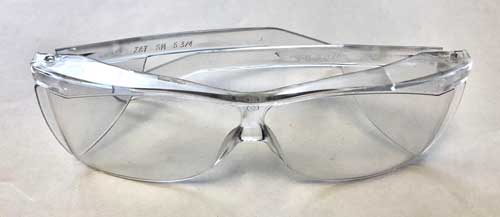
Always
wear safety glasses when doing any of
these exercises and dispose of all scraps
properly.
|
Exercise
1: Cut off a length of Cat 5e cable about 1meter or
3 feet long
2. Strip
~50mm - 2" - jacket from one end of the cable
as you did in the previous exercise
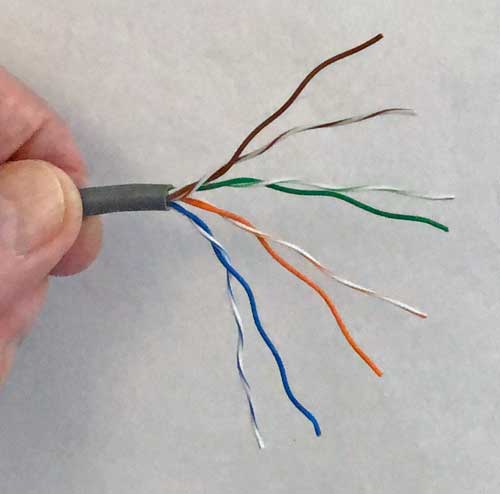
3. Untwist all the pairs leaving about 13mm or 1/2 inch of
the twists
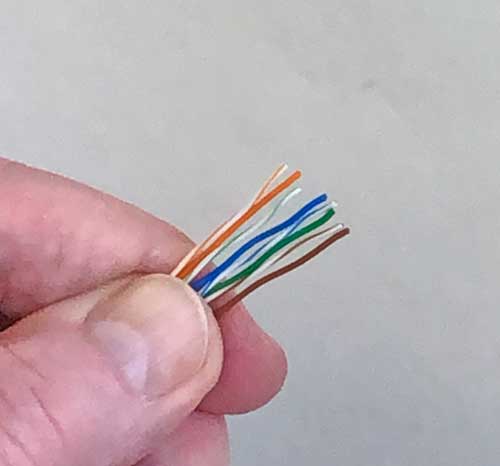
4. Straighten
the wires
from each pair and align for the proper color code in the
plug - Use T-568B for this cable

5.
Slide the wires into the back of the plug, keeping them
all straight to maintain the color codes.
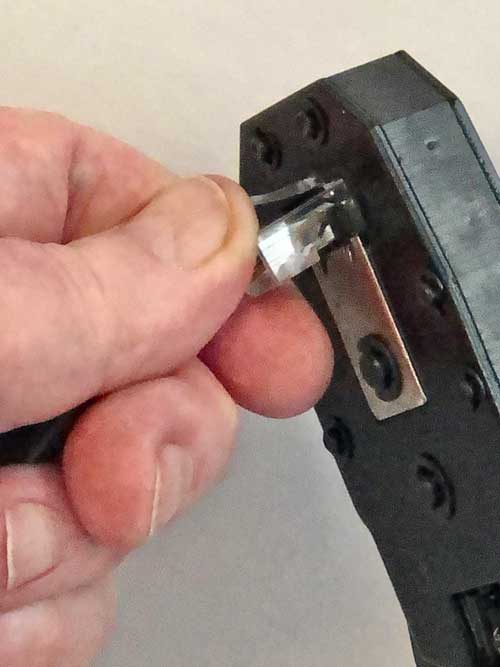
6. Insert the plug
into the crimper and crimp fully
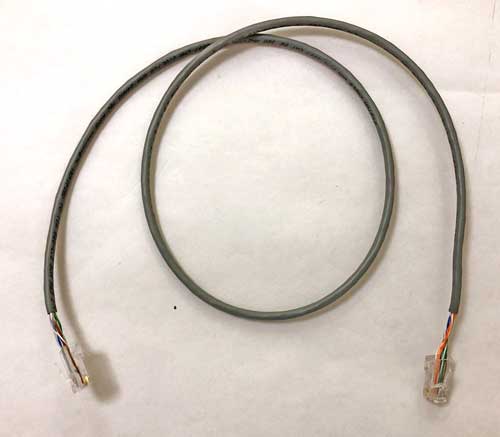
7. Repeat with the other end of the cable to create a
patchcord.
8. Go to the wiremapping
exercise to test your patchcord.
Repeat this exercise several times until you feel
comfortable with your skills.
You
have successfully completed this exercise when you
have been able to strip the jacket and both buffer
coating layers from the fiber without breaking the
fiber.
Clean up all your fiber
scraps and dispose of them in a container like a used
take-out coffee cup marked "Fiber Scraps"!
After successfully stripping fiber several times, fill
in your
Scorecards
(PDF).
Lessons and Exercises
Click on the links for each exercise. Download the Scorecards
to keep records of your completion of each exercise.
1. UTP
Cable
2.
Terminating UTP Cable with modular 8-pin
plugs
3. Terminating
UTP Cable with modular 8-pin jacks
4. Testing
- wiremapping patchcords and links
Return
to Lesson Plan
This information is
provided by The Fiber Optic Association, Inc. as a
benefit to those interested in teaching, designing,
manufacturing, selling, installing or using fiber optic
communications systems or networks. It is intended to be
used as an overview and/or basic guidelines and in no
way should be considered to be complete or
comprehensive. These guidelines are strictly the opinion
of the FOA and the reader is expected to use them as a
basis for learning, as a reference and for creating
their own documentation, project specifications, etc.
Those working with fiber optics in the classroom,
laboratory or field should follow all safety rules
carefully. The FOA assumes no liability for the use of
any of this material.
|
